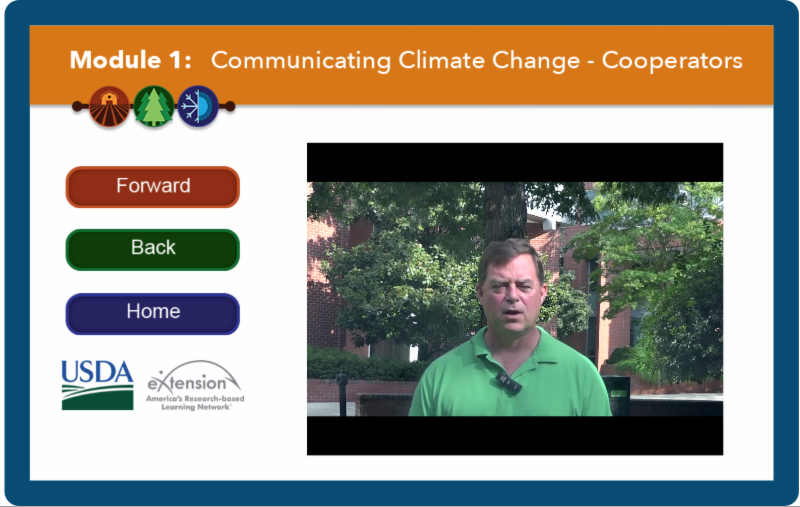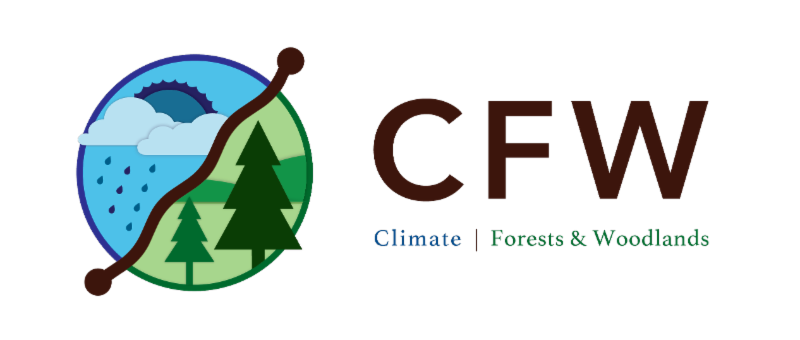
Do you know your carbon footprint?





 Montana State University will be holding their 2015 MSU Extension Climate Science Conference on December 8-10, 2015 in Bozeman, MT at the Montana State University Student Union Building (SUB). The conference seeks to provide education for regional Extension Agents and train them in climate science basics, regional climate trends and more. Speakers include Windy Kelly from the USDA Northern Plains Regional Climate Hub and former U.S. Representative Bob Inglis.
Montana State University will be holding their 2015 MSU Extension Climate Science Conference on December 8-10, 2015 in Bozeman, MT at the Montana State University Student Union Building (SUB). The conference seeks to provide education for regional Extension Agents and train them in climate science basics, regional climate trends and more. Speakers include Windy Kelly from the USDA Northern Plains Regional Climate Hub and former U.S. Representative Bob Inglis. Last week the CLN presented a progress report to the Climate Hub Leaders at their annual meeting in Washington, DC. It was a great opportunity to update the Hubs on what we have done and what we are working on. We previewed our Learning Module design and the new CLN website and are excited to launch both to the public in the near future. The CLN is dedicated to helping the Hubs connect with Land Grant Universities using the Cooperative Extension System and creating a Climate Literate Network of Extension Agents. eXtension is gearing up for big changes as well as they launch the i-three Corps using Issues, Innovation and Impact to make a difference on our working lands. Our presentation to the Hub leaders can be downloaded here.
Last week the CLN presented a progress report to the Climate Hub Leaders at their annual meeting in Washington, DC. It was a great opportunity to update the Hubs on what we have done and what we are working on. We previewed our Learning Module design and the new CLN website and are excited to launch both to the public in the near future. The CLN is dedicated to helping the Hubs connect with Land Grant Universities using the Cooperative Extension System and creating a Climate Literate Network of Extension Agents. eXtension is gearing up for big changes as well as they launch the i-three Corps using Issues, Innovation and Impact to make a difference on our working lands. Our presentation to the Hub leaders can be downloaded here.
CFW leadership just returned from Annapolis, MD where, together with the CLN, we attended the NE Climate Hub Partners Network meeting. CFW had the opportunity to meet the NE Hub leadership and team, learn about future direction, and present the CFW as an outreach multiplier with nationwide access to the land grant Extension community and their clientele. We look forward to an ongoing connection with the NE and all the USDA Climate Hubs.
 eXtension and the CLN are looking for energetic, motivated individuals working in climate issues to join the new i-Three Issue Corps. Members of the corps will get an opportunity to develop a project with measurable impact focused on YOUR needs using the tools of the new eXtension. The main requirement is that your institution is an eXtension Foundation member organization. Nominations are due November 6th. More information can be found here. Nominations are due November 6th.
eXtension and the CLN are looking for energetic, motivated individuals working in climate issues to join the new i-Three Issue Corps. Members of the corps will get an opportunity to develop a project with measurable impact focused on YOUR needs using the tools of the new eXtension. The main requirement is that your institution is an eXtension Foundation member organization. Nominations are due November 6th. More information can be found here. Nominations are due November 6th.By Glenn Ahrens, OSU Forestry and Natural Resources Extension Agent – Clackamas, Marion, & Hood River Counties
Dying Douglas-fir trees have been a common sight in western Oregon recently due to drought-related problems, exacerbated by diseases and insects that attack stressed trees. History shows that periodic drought is to be expected in western Oregon and Douglas-fir forests are adapted to summer heat and drought to some extent. But extreme drought causes tree morality and raises concerns. In the news about climate change, there is a lot of talk about higher levels of heat and drought being the “new normal”. Is the recent drought “normal” or “abnormal” for western Oregon? Either way, how can we manage our forests to improve their ability to withstand climatic extremes?


Historical climate data shows that 2015 has indeed been rather extreme, but not the worst on record in western Oregon (climate data from Estacada Station 2E http://www.ocs.orst.edu/oregon-climate-data ). The Estacada station was chosen as an example because it is in the heart of the west Cascades and it has consistent records back to 1909. Summer 2015 ranks 2nd warmest (average July daily maximum temperature) and 6th driest (rainfall June-July-August) over the last 105 years. 2015 is one of only three years ranked in the top 10 for both heat and drought at the same time.
Regardless of any trends in climate change, it is clear that periodic extremes in heat and drought can be expected. Forest management practices to maintain forest resilience – the ability to recover from stressful or damaging events – can play an important role in sustaining forest health in the face of climatic extremes. While foresters have been most concerned with this on the drier east side of Oregon, attention to forest resilience and “stress relief” for trees during drought cycles is important on the west side as well.
Thinning and vegetation management in forests west of the Cascades crest are often employed to improve growth rate and quality of residual trees. These treatments can also be used to increase forest resilience by providing relief from competition stress, by managing fuel loads and reducing hazards and risks of severe fires.
The current extreme conditions in western Oregon emphasize the need to assess forest resiliency and consider some management activities if warranted. Techniques that can be used to increase resiliency and reduce risks include:

As with any management activity, there can be tradeoffs involved with treatments aimed at increasing forest resilience. While a thinning generally improves tree vigor and therefore some long-term resiliency, thinning also produces some stress, creates slash debris or other changes that may increase some vulnerabilities in the short term. Newly thinned stands are often somewhat more vulnerable to wind or ice damage. Thinning opens the understory to more light, which may improve understory growth and wildlife habitat, but also increases heat and drying and the amount of grass, brush, and slash fuels. A manager may need to consider vegetation control and cleanup to reduce fuel hazards after thinning.
Managing for resilient forests draws upon the basic foundation of successful woodland management: getting to know your soils, climate, and topography, and how each tree species is suited to your site. Applying this knowledge with an eye toward periodic climatic extremes and possible warming trends involves active management treatments such as thinning and weeding to reduce moisture stress, and fuels reduction to reduce fire hazards.
The post Managing Forest Health and Resilience to Climate Stress appeared first on Oregon Forests and Climate Change.
Welcome to WordPress. This is your first post. Edit or delete it, then start writing!
Are climate vulnerability assessments different from impact assessments? If so, what’s the difference? Fortunately, Linda Joyce and Maria Janowiak of the US Forest Service have figured this out for us. In their article “An Introduction to Climate Change Assessments” they identify three types: Impact Assessments, Vulnerability Assessments and Natural Resource Assessments. Each type has a different purpose and focus. 
As the authors explain it, impact assessments are designed to combine the scientific results about to what is likely to happen due to climate change. Vulnerability assessments talk about how scientists see the ability of a forest, or community, to respond and adapt to the changes. And natural resource assessments are just that – an evaluation of the current condition of a resource and the significant factors affecting that resource from climate change.
All types of assessments provide valuable information for policy makers, but can also give forest landowners an idea of what they might expect – more rain, less rain, greater temperatures, etc. – and how it will affect their forests. The regional (and state, where available) climate assessment reports and summaries are all available on the Climate, Forests and Woodlands Community of Practice site.